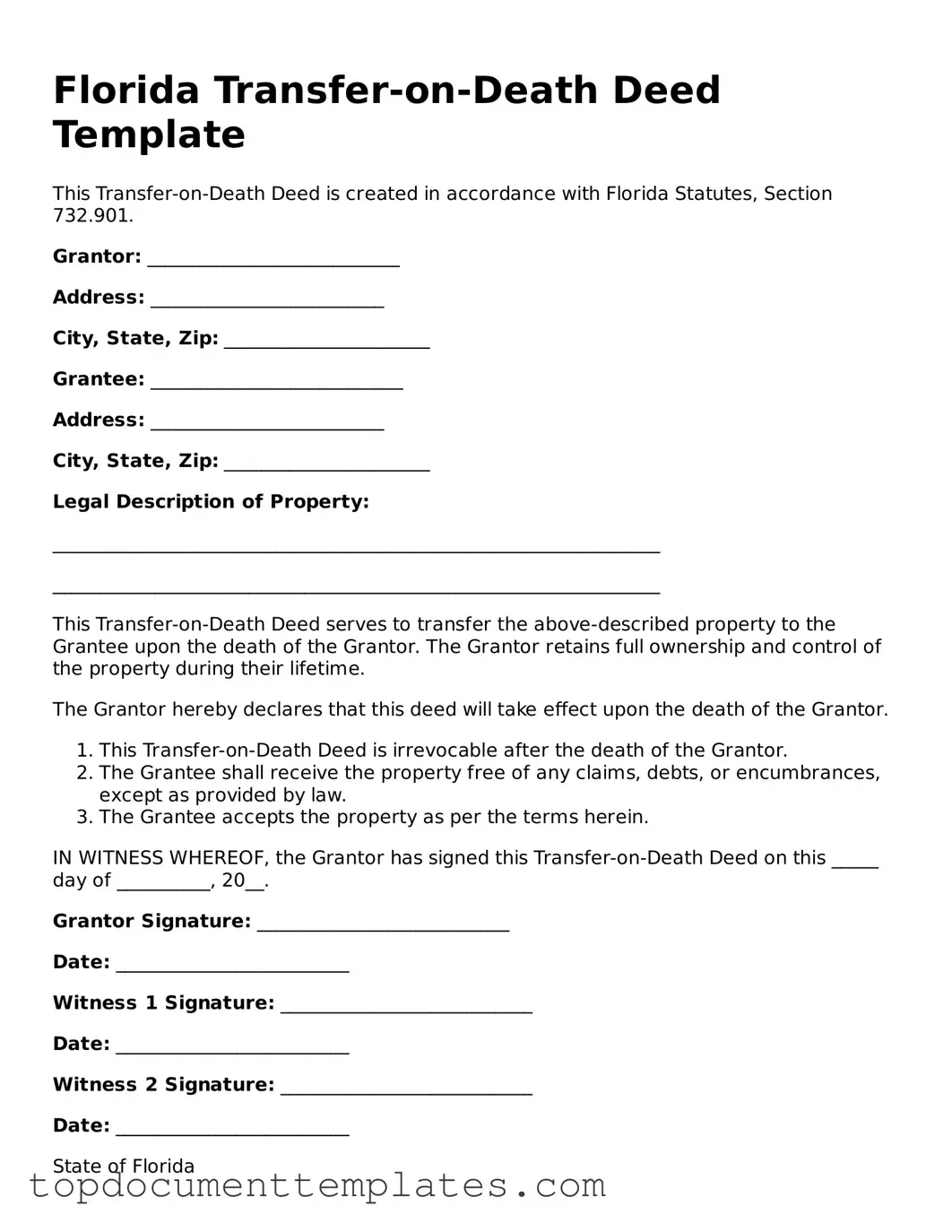Valid Transfer-on-Death Deed Form for Florida State
The Florida Transfer-on-Death Deed form allows property owners to designate beneficiaries who will receive their real estate upon their passing, avoiding the probate process. This straightforward legal tool simplifies the transfer of ownership and ensures that your wishes are honored without unnecessary delays. For those considering this option, filling out the form is an essential step; click the button below to get started.
Open This Form
